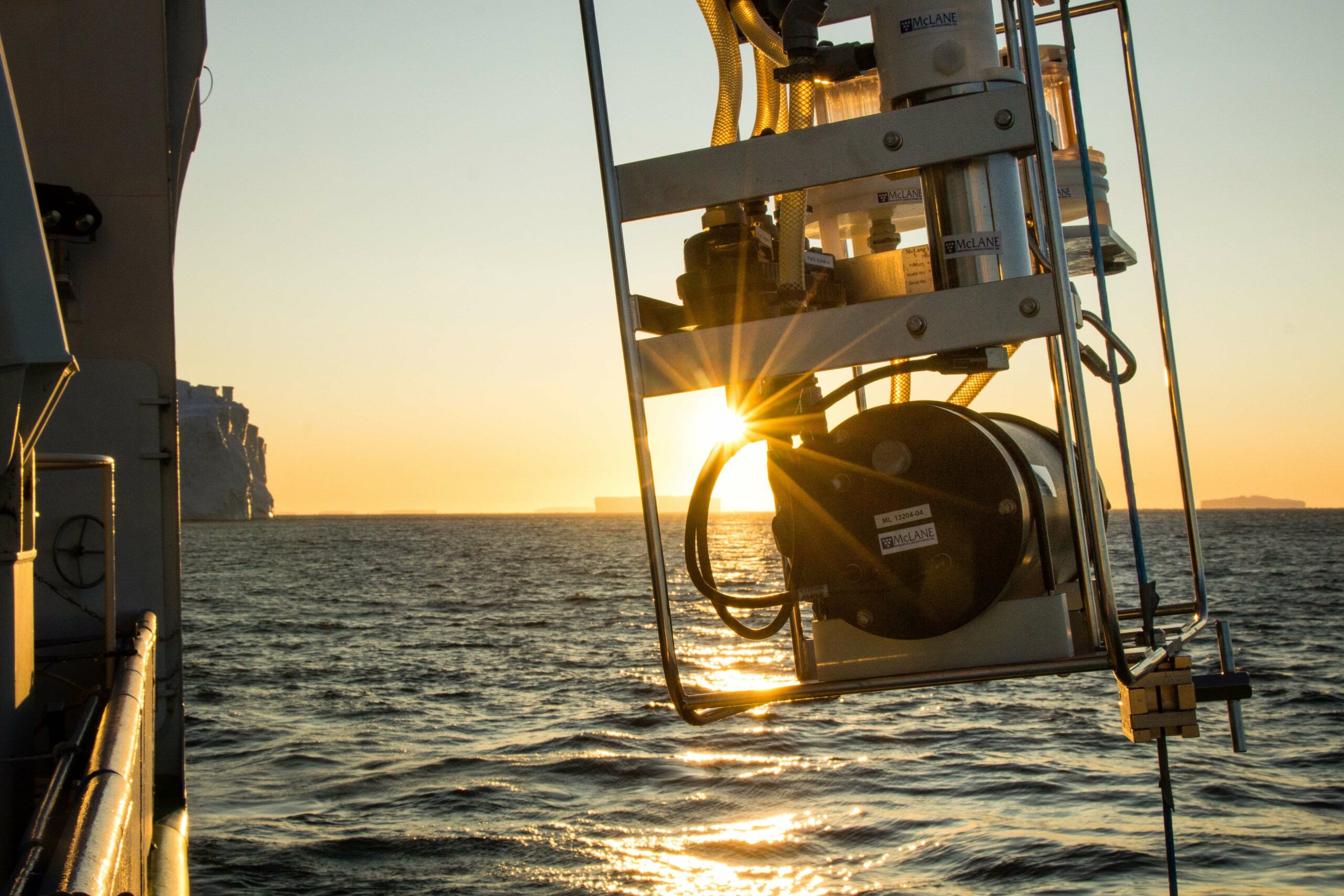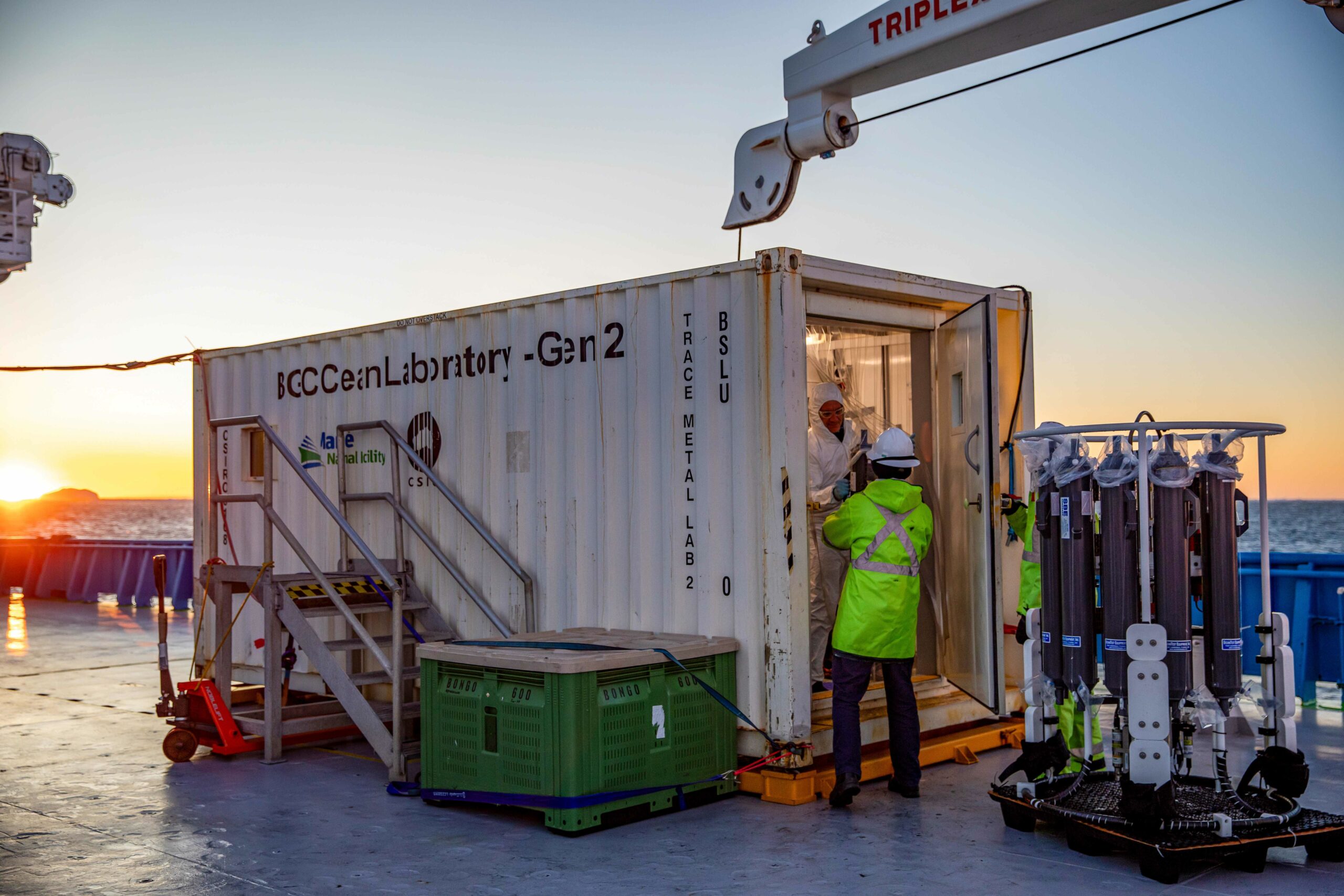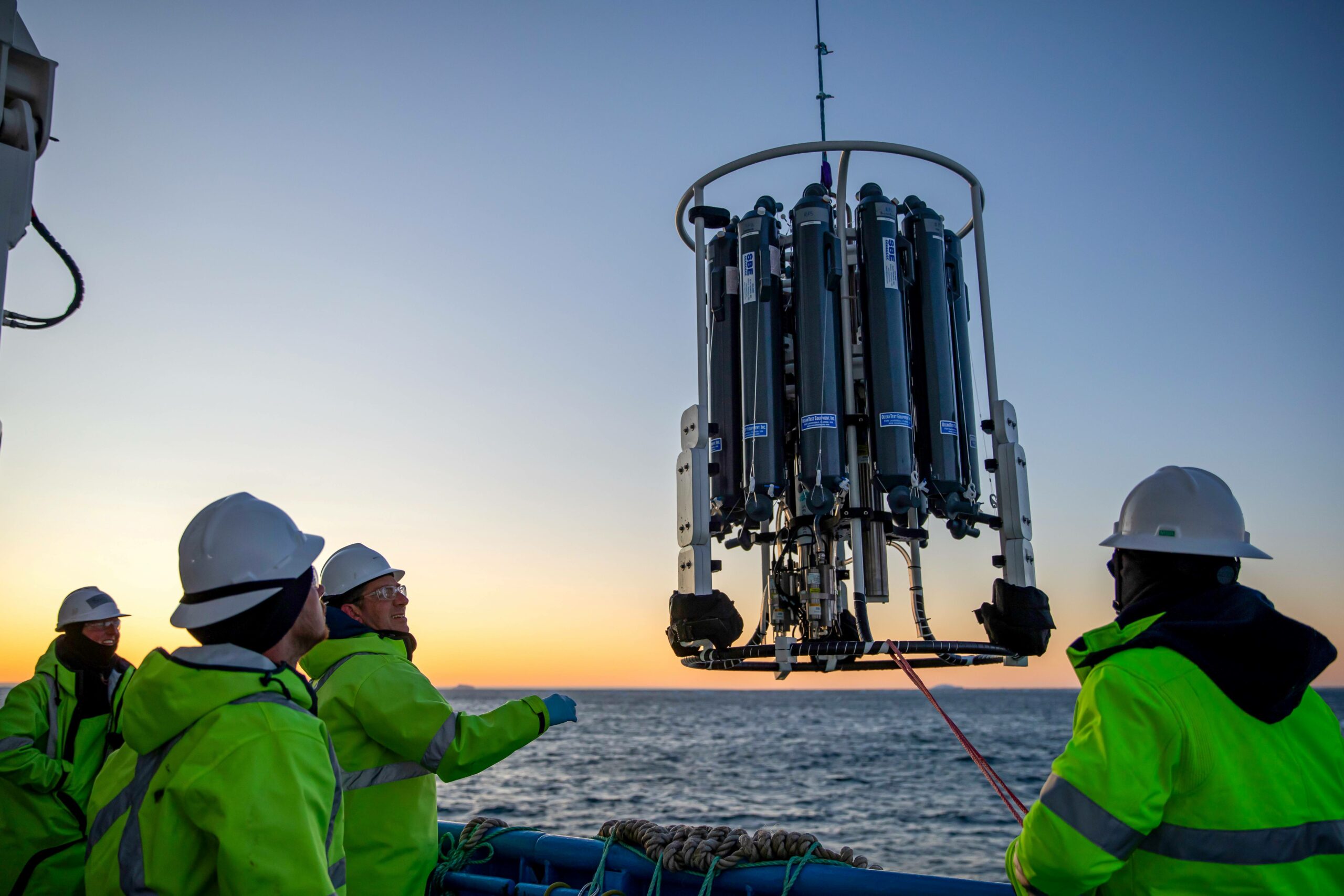Tracing the metals that power the carbon pump
Chris Traill and McKeira Cumming (IMAS/AAPP), GEOTRACES team
The trace metal team on the MISO voyage are the cleanest of all the teams onboard CSIRO research vessel (RV) Investigator – but not by choice! We’re sampling the ocean and atmosphere for vanishingly low concentrations of trace metals like iron and zinc. Because only ‘trace’ amounts of these metals exist in the Southern Ocean, we need to be extremely clean and careful when collecting samples to make sure these vital elements are measured correctly.

But why do we need to measure these metals on our 9000-kilometre journey in the first place? The answer lies in the core goal of the MISO voyage: to study the interactions between Southern Ocean biology, chemistry and physics, and the complex interactions between these processes in the ocean, atmosphere and Antarctic continent. Specifically, trace metals are essential to understanding what processes control Southern Ocean biology and its connection to the carbon cycle and climate.
Trace metals are a large group of metallic elements such as iron, zinc, manganese, copper, nickel and many others. These elements are essential for microscopic plant-like organisms known as marine phytoplankton to photosynthesize and grow. Trace metals can be thought of as supplements or vitamins and are the micronutrients that enable phytoplankton to reach their full potential as carbon dioxide (CO2) eaters. Phytoplankton are key contributors to the balance of carbon between the atmosphere and oceans, influencing the earth’s climate system.
However, because there are such few trace metals available to phytoplankton, they become the limiting factor in phytoplankton growth and their ability to take up CO2, termed ‘productivity’. In particular, iron is known to be a major limiting micronutrient in much of the Southern Ocean, with new research indicating manganese also has an important role in Southern Ocean biological productivity.
Because phytoplankton growth is limited by these metals, factors like when, where and how much metallic micronutrients are available can dictate the uptake of CO2 by phytoplankton in much of the Southern Ocean. Since this biological effect on CO2 concentrations is important for climate regulation, trace metals are an important part in understanding the interaction between biology, carbon cycle and Southern Ocean climate.
The MISO voyage seeks to directly investigate these interactions. By sampling for dissolved and particulate metals in seawater, the atmosphere, rainwater and snow, the trace metal team looks at the different sources of metals from the atmosphere or ocean, how they are transported and where they end up.
Our findings will complement the biology team onboard, who will examine the impact of trace metals in controlling the growth of phytoplankton and interactions with the atmosphere through their mesocosm and incubation experiments. By measuring trace metals across the entire breadth of the Southern Ocean, we can upscale the results from onboard experiments to estimate the power that biological productivity might have in the Southern Ocean south of Australia.
We can also compare new measurements from MISO to previously sampled locations and see how processes that distribute trace metals change over time. In addition to measuring micronutrient metals, we also measure those originating from radioactive elements (like thorium) and rare earth elements that can be used to understand the sources of metals to the ocean, how long they last in the water column and their transport with ocean currents.
The data we collect from the MISO voyage also contributes to the international GEOTRACES program, a long-running global compilation of trace metal data across the world’s oceans. For the I90S transect running north from Antarctica to Perth (or GS05), we will be collecting trace metal data in this region for the very first time, filling an important gap in the GEOTRACES efforts to map global trace nutrient biogeochemistry.
2024 MISO GEOTRACES team: Scott Meyerink, Rebecca Zitoun, Tom Williams, Chris Traill, Knut Heinatz and McKeira Cumming with shore support from Andrew Bowie and Tom Holmes.

This research is supported by a grant of sea time on RV Investigator from the CSIRO Marine National Facility which is supported by the Australian Government’s National Collaborative Research Infrastructure Strategy (NCRIS).






